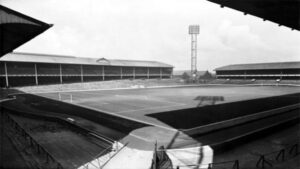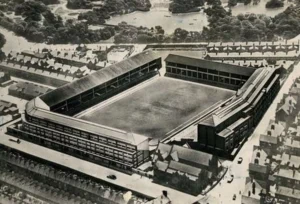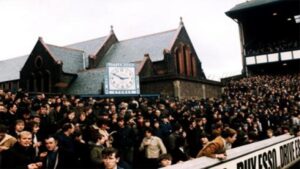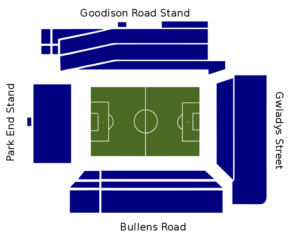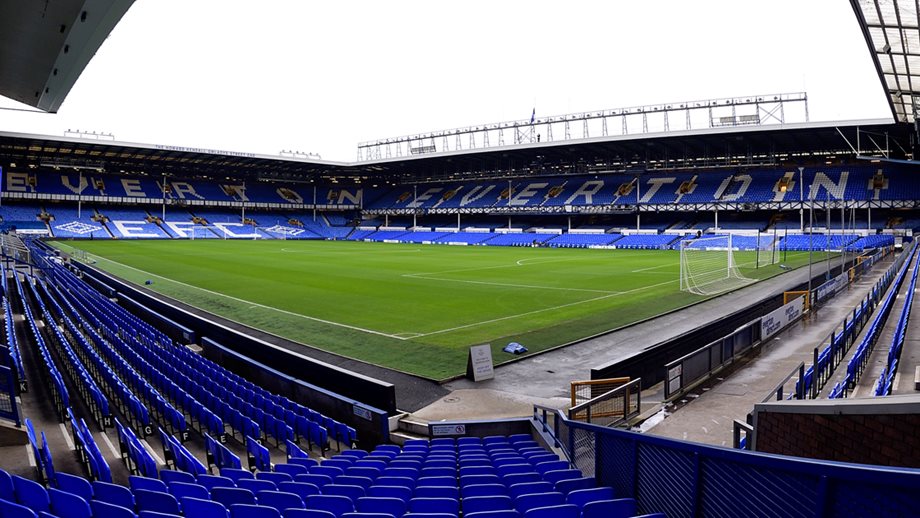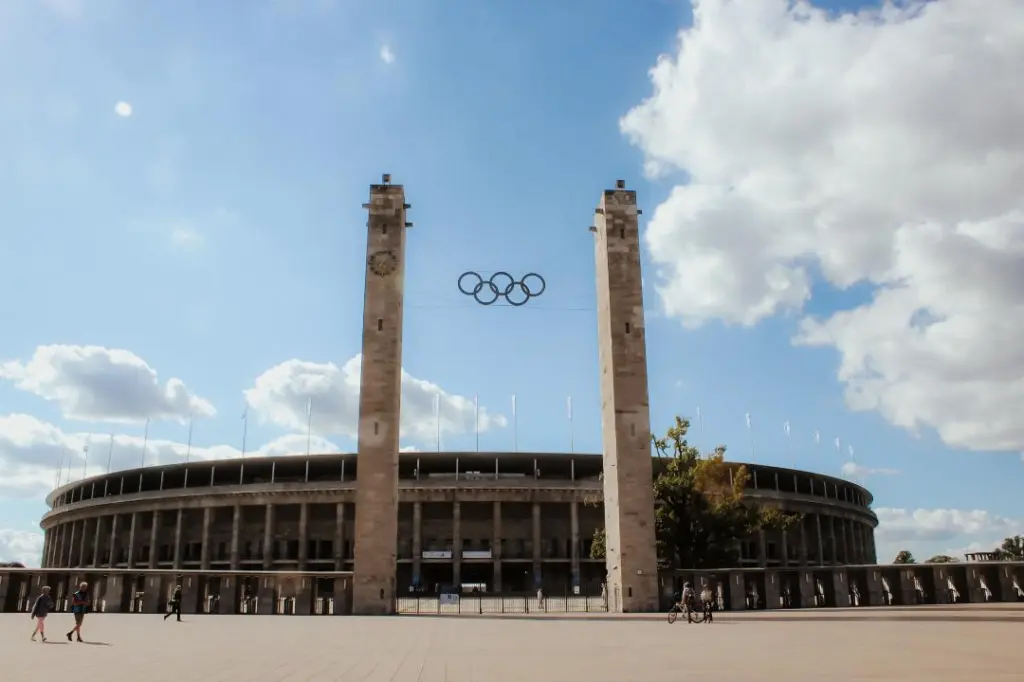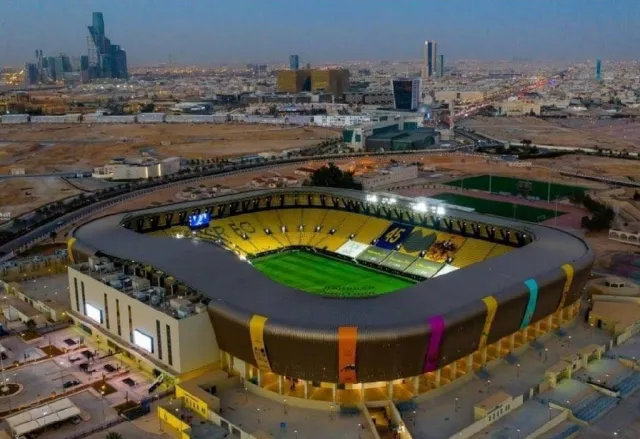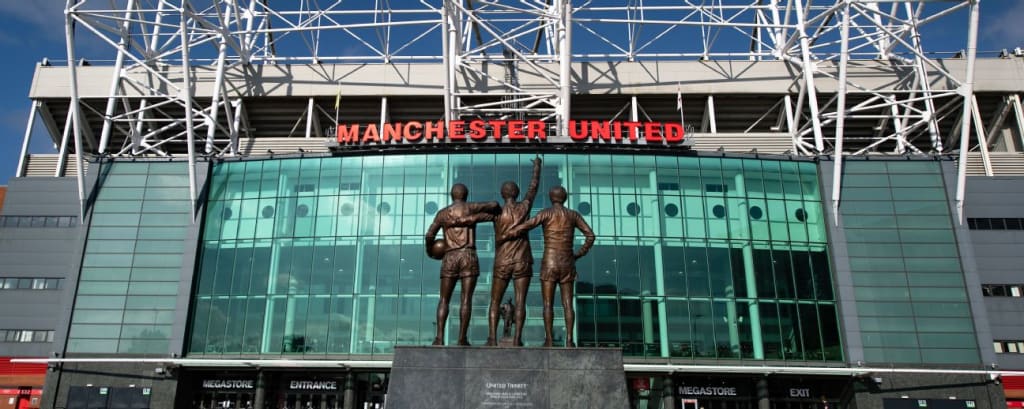Goodison Road Stand
Building a New Legacy
The Goodison Road Stand stands as a testament to Everton’s commitment to modernization and progress. Built in phases between 1969 and 1971, it replaced the iconic double-decker stand crafted by renowned architect Archibald Leitch in 1909.
Unique Features
Each level of the Goodison Road Stand boasts a distinctive identity. From the Family Enclosure, formerly terraced, to the elevated Top Balcony, every section offers a unique viewing experience. Following its conversion to an all-seater stadium in 1987, the stand now accommodates 12,664 passionate fans.
Versatile Spaces
Beyond its role on matchdays, the Goodison Road Stand serves as a hub for conferences, weddings, and other events. Its conference and hospitality facilities provide a versatile backdrop for gatherings of all kinds, ensuring that Goodison Park remains a vibrant community hub.
Bullens Road Stand
Embracing Tradition
Named after its adjacent Bullens Road, this stand comprises the Upper Bullens, Lower Bullens, and The Paddock. Designed by Archibald Leitch, the Upper Bullens showcases intricate truss patterns, adding to its architectural charm.
A Home for Away Fans
The Bullens Road stand also caters to visiting supporters, with designated seating in the back row. With a seating capacity of 10,546, it continues to be a cherished part of Goodison Park’s heritage.
Howard Kendall Gwladys Street End
The Heartbeat of Goodison
Known as the “Popular End,” the Gwladys Street Stand epitomizes Everton’s passionate fanbase. Divided into Upper Gwladys and Lower Gwladys, it reverberates with the cheers and chants of devoted supporters.
A Tribute to Excellence
In honor of Everton’s legendary manager Howard Kendall, the stand was renamed in 2016, recognizing his remarkable contributions to the club’s success.
Sir Philip Carter Park Stand
A Symbol of Transformation
The Park End Stand, affectionately known as the Sir Philip Carter Park Stand, underwent significant changes over the years. From its origins as the Stanley Park End to its current configuration, it has evolved to meet the needs of modern football.
A Legacy of Community
The Park End stand’s history intertwines with the surrounding neighborhood, once filled with terraced housing. Today, it stands as a testament to Everton’s enduring connection to its community and the spirit of renewal that defines Goodison Park.
Goodison Park Stadium Usage
Goodison Park Stadium stands as a hallowed ground for football aficionados worldwide. For over 125 years, it has served as the cherished home of Everton Football Club, witnessing iconic moments etched into the annals of English football history.
With a capacity of up to 39,572 spectators, Goodison Park ranks among the largest football arenas in England. Throughout its storied existence, the stadium has played host to a plethora of prestigious matches, including FA Cup semi-finals and finals, international friendlies, and pivotal England World Cup qualifiers.
The hallowed turf of Goodison has been graced by legends such as Dixie Dean, Neville Southall, Alan Ball, and Tim Cahill. The fervent atmosphere generated by Evertonians on matchdays reverberates throughout the stadium, showcasing their unwavering passion from kickoff to final whistle.
Moreover, Goodison Park holds a significant place in European football lore, having served as a venue during Euro ’96, a tournament that left an indelible mark on football history. Memorable moments, such as Gazza’s legendary goal against Scotland, unfolded within its confines, further cementing its legacy.
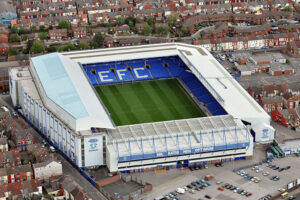
Beyond football, Goodison Park Stadium transcends its role as a sporting arena, hosting a myriad of non-football events year-round. The annual Goodison sleepout sees fans spend a night at the stadium to raise funds for the homeless, exemplifying the club’s commitment to social causes.
Additionally, the stadium has welcomed renowned musicians like Elton John, Bon Jovi, and Beyonce for electrifying concerts, attracting crowds eager to experience the iconic venue in a different light.
Furthermore, Goodison Park’s conference facilities offer versatility, providing businesses with the opportunity to host meetings and corporate events amidst the stadium’s historic backdrop.
Moreover, the stadium’s distinctive architecture has made it a sought-after filming location for movies and television productions, adding to its allure and charm.
In essence, Goodison Park Stadium’s multifaceted nature showcases its enduring significance in both football and broader cultural spheres, ensuring that every visit is an unforgettable experience for enthusiasts and patrons alike.
How to Get to Goodison Park Stadium

Getting to Goodison Park Stadium is easy and convenient, with several transport options available. The stadium is located in Walton, a suburb of Liverpool about 4 kilometers from the city center.
For those traveling by car, there are plenty of parking lots near the stadium that offer affordable rates on match days. However, it’s worth noting that traffic can be heavy around the area during peak times.
If you prefer public transportation, some numerous buses and trains will take you directly to Goodison Park Stadium. Bus routes 19, 20, and 21 stop just outside the stadium while train stations such as Kirkdale and Sandhills are within walking distance.
For international visitors arriving at Liverpool John Lennon Airport or Manchester Airport, frequent shuttle services are running between these airports and Liverpool city center where connecting transport links can be taken to get to the Goodison Park Stadium.
Getting to Goodison Park Stadium is stress-free whichever mode of transport you choose. Be sure to arrive early for your match day experience!
Other Useful Links:
Also Check: Old Trafford: The Iconic Theater of Dreams
Also Check: Europe’s Top 10 Largest Sports Stadiums
Also Check: Allianz Arena: Renovation Work In and Around Allianz Arena for EURO 2024
Also Check: Top Soccer Stadiums in South Africa to Explore in 2024
Also Check: Top 10: Largest Stadiums In Africa
